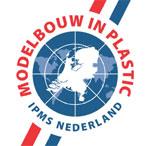The Northrop F-89 Scorpion was one of the primary defenders of North American airspace during the Cold War. The XP-89 prototype flew August 1948. Series production began early 1949. The F-89A had a AN/APG-33 radar and an armament of six 20 mm (.79 in) T-31 canons. Fuel tanks were permanently fitted to the wingtips. Underwing racks could carry 16 5 in (127 mm) aerial rockets or up to 3,200 lb (1,455 kg) of bombs. Many problems were with this type with only 18 made and several new variants were to be developed. The main production model was the F-89D, entering USAF service in 1954. It had no canons and got new Hughes E-6 fire control system with AN/APG-40 radar and an AN/APA-84 computer. Armament was two pods of 52 2.75 in (70 mm) "Mighty Mouse" FFAR rockets.
The F-89 equipped 36 active US Air Force Units and 17 Air National Guard squadrons. One of the most heavily armed fighter aircraft, the F-89 was the backbone of the North American Air Defense Command for more than 17 years. The F-89 was the first multi-seat, all-weather jet interceptor. It was the first aircraft designed to carry an all-rocket armament and the first to carry the Hughes Falcon air-to-air guided missile, and notably the first combat aircraft armed with air-to-air nuclear weapons (the unguided Genie rocket).
Over 1,000 F-89 Scorpions were manufactured.

Northrop F-89D Scorpion
This aircraft has serial 53-2610 and is on display at the USAF Armament Museum at Eglin AFB.
Photographed Januari 2012 by Cees Hendriks (c) Copyright IPMS Nederland
F-89 Scorpion
This rather weathered barren aircraft was seen at the March Field Air Museum at Riverside (CA), USA
Photographed November 2015 by Cees Hendriks (c) Copyright IPMS Nederland
F-89J
This Scorpion was constructed as a F-89D-70-NO by Northrop at Hawthorne in 1953. It was converted to F-89J with had Bur.no. 53-2674. It served with several USAF units. Seen now bearing a rather weared scheme at the Pima Air & Space museum, Tucson (Az.).
Photographed 2016 by Cees Hendriks (c) Copyright IPMS Nederland
A few plastic scale models have appeared over the years. There were very old Monogram and Revell kits. A good kit in 1/48 was from Revell. In 1/72 scale Academy and Revell have good kits. In 1/32 a very basic ID models (now Tigger) vacuform existed.
This walk around webpage was first created May 2012 by M. de Vreeze




























































































































































